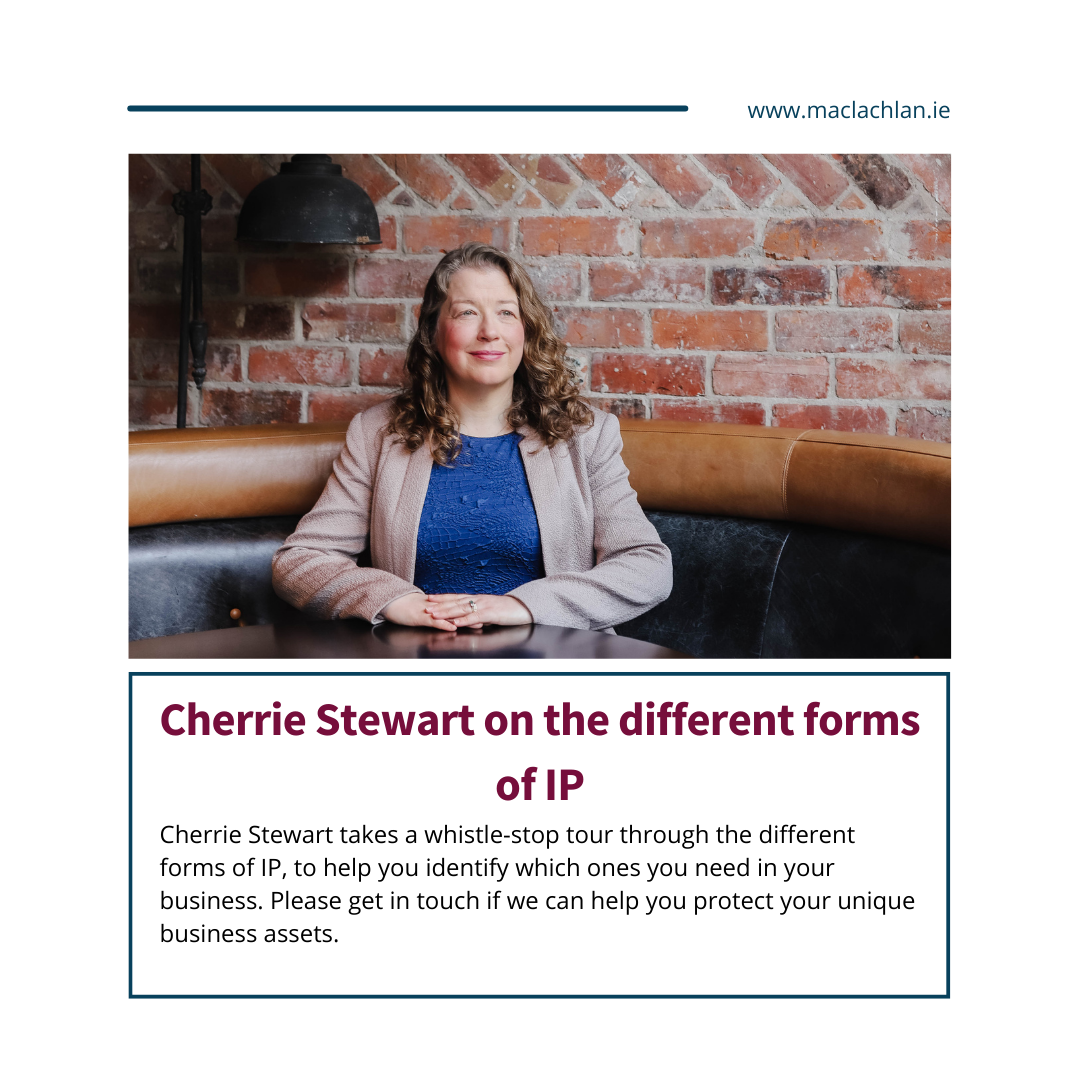As in every other industry, the field of Intellectual Property is full of terminology and jargon which is oftentimes misunderstood. We frequently receive ‘phone calls asking for advice on how to “copyright” a new invention or “patent” a brand. Even the term ‘Intellectual Property’ is open to misinterpretation. So, what is Intellectual Property?
Intellectual Property, or IP, is a set of intangible property rights that may arise as the result of creativity or innovation. It is the collective term for several different standalone rights that may either come into existence automatically or be obtained through registration. The main forms of IP include copyright, design rights, patents, trade marks and trade secrets and each of these protects a different aspect of a work.
Patents protect novel inventions or modifications to an existing product. To obtain a patent, the innovation must be new, inventive, and industrially applicable. Whatever you do, do not make your invention or modification public before filing your patent application, as that would prevent you from obtaining a valid patent. As soon as you have filed a patent application you can mark the product with Patent Pending and the application number and make it public.
Design Rights protect the appearance of a product resulting from features including the shape, colour, texture and ornamentation of the product. The appearance of the product must be new and have individual character, i.e., be unique. There are a few exclusions of what can be protected. For example, it is not possible to protect features of appearance of a design that are solely dictated by the products technical function e.g., the round shape of a wheel or something that must look a certain way to fit into another product, e.g., a connector, so that either can perform its function. Once you have registered your design you can mark it with Registered Design and the Registration No.
Trade Marks are the outward signs that are used to distinguish your goods or services from those of your competitors; they are badges of origin. They could include a word, a logo, a colour or colour combination, a sound, or even an action (think Asda’s bottom tap). Anything that lets a consumer know that these goods are from a certain brand are trade marks. A trade mark can be protected by registering in the territory in which it is used, or in which you plan to use it. You should mark any trade mark you use with the TM symbol which means you see the mark as a trade mark. If you have a trade mark registration you should use the ® symbol which denotes its registered status.
Copyright automatically comes into existence upon the creation of an artistic or literary work. Copyright does NOT protect an idea; copyright protects the expression of an idea. It is the right to stop others from copying the protected works. Copyright not only protects artistic and literary works such as paintings, drawings, sketches, novels, poems, lyrics or music but also protects photographs, diagrams, illustrations, charts, graphs, a unique layout, reports, promotional and instructional literature, educational material, architectural plans, presentations, software code, knitting patterns, etc. You can mark any work you create with the © symbol, your name and the date of creation.
Trade Secrets include any type of information that is not generally known or capable of being reverse-engineered by others, by which a business can obtain an economic advantage over competitors or customers, now or in the future. These can include a practice, manufacturing process, survey method, formula, recipe, business plan, algorithm, software code, marketing information, failed test result, competitive analysis, product roadmap, non-patented and undisclosed invention, data (raw and processed) such as client data, supplier data, test data, cost data, maintenance data, etc. Essentially a trade secret can include anything that is commercially sensitive, and which can be kept confidential. The information is essentially protected by keeping it secret, hence the name.
So, in a nutshell, patents protect the way something works; design rights protect the way something looks, trade mark registrations protect the signs that identify products as being from a particular company; copyright protects artistic and literary works; trade secrets can protect those things that cannot be reverse engineered; and Intellectual Property is the collective term for them all.
If you need assistance in protecting the results of your creativity and ingenuity, why don’t you make an appointment to speak with one of our attorneys who would be happy to help you navigate this complex area?
Cherrie Stewart, Director and Chartered Trade Mark Attorney


